Turf
18 JUL 2025
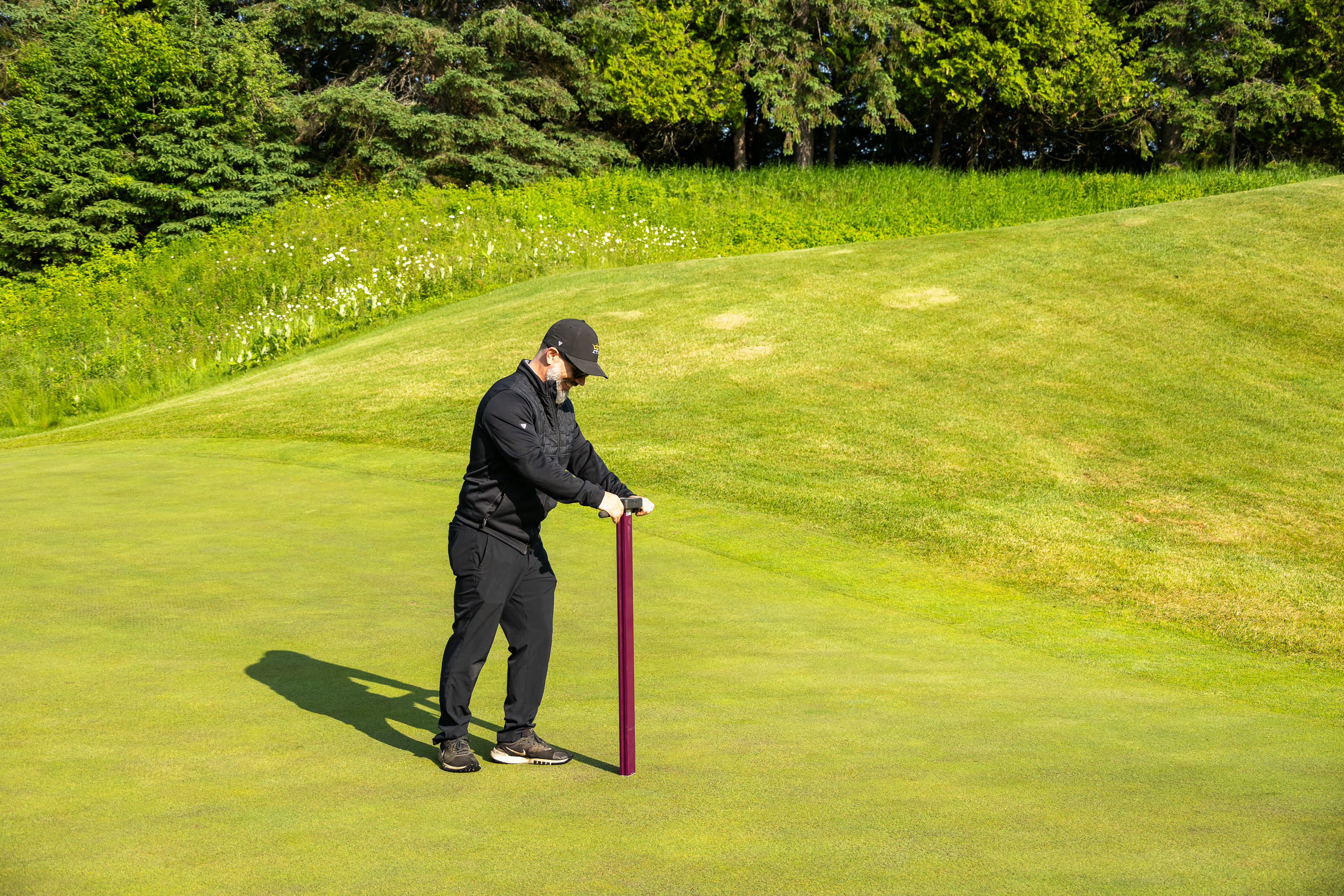
Once again this week, several small jobs were carefully carried out on the course to maintain the quality of play and aesthetics of your course. Granular fertilizer was applied to tall grass areas all over the course, and a targeted fungal treatment was carried out to counter plaque blight.
Our young students, as motivated as ever, redoubled their efforts to repair the divots in the fairways and on the tees. They also enriched the tall fescue around the traps on hole 1, and tackled the wild parsnip by hand.
There's no shortage of work, whether at Le Maitre or La Bête, we keep up the pace with passion and determination!
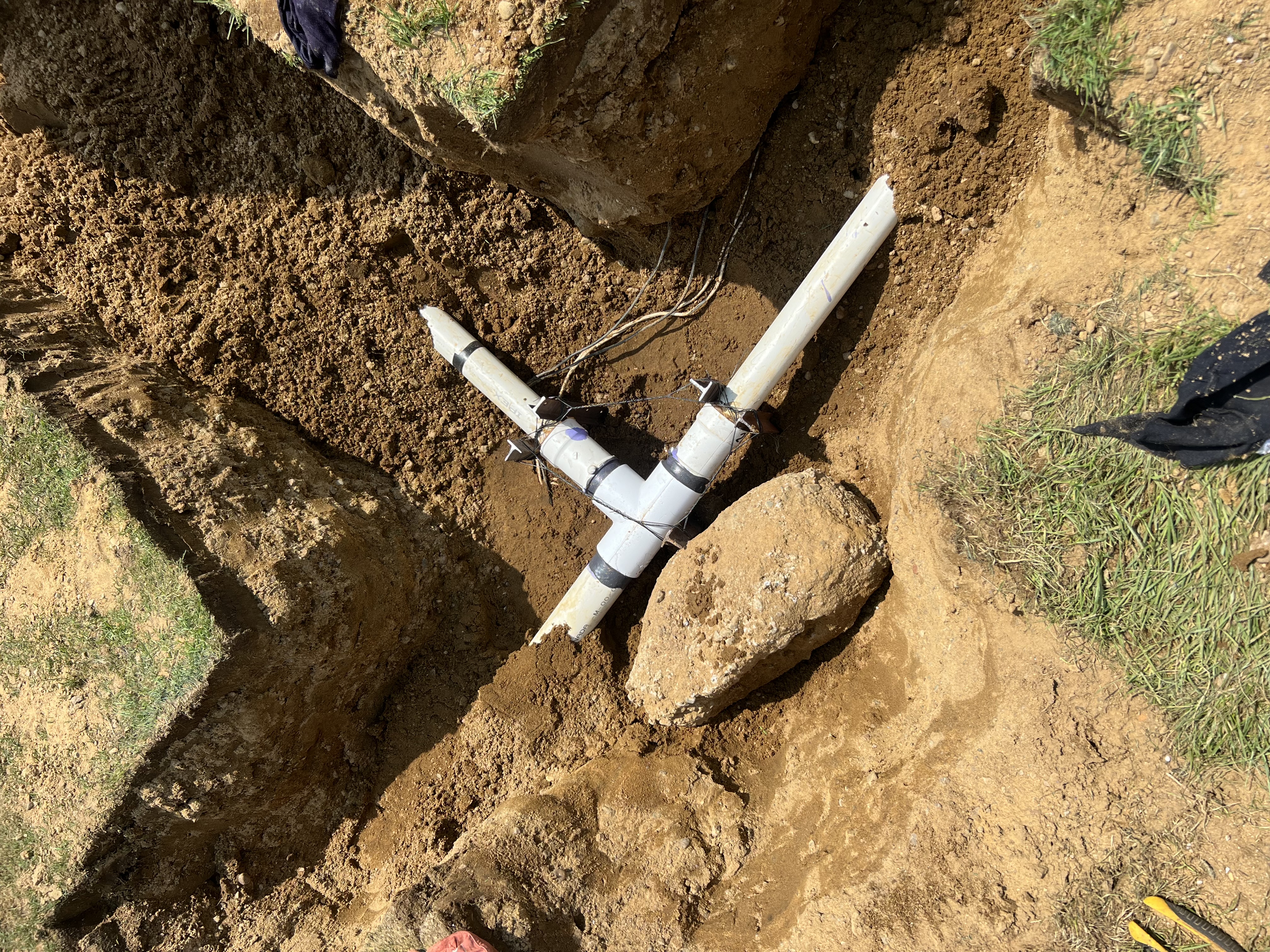
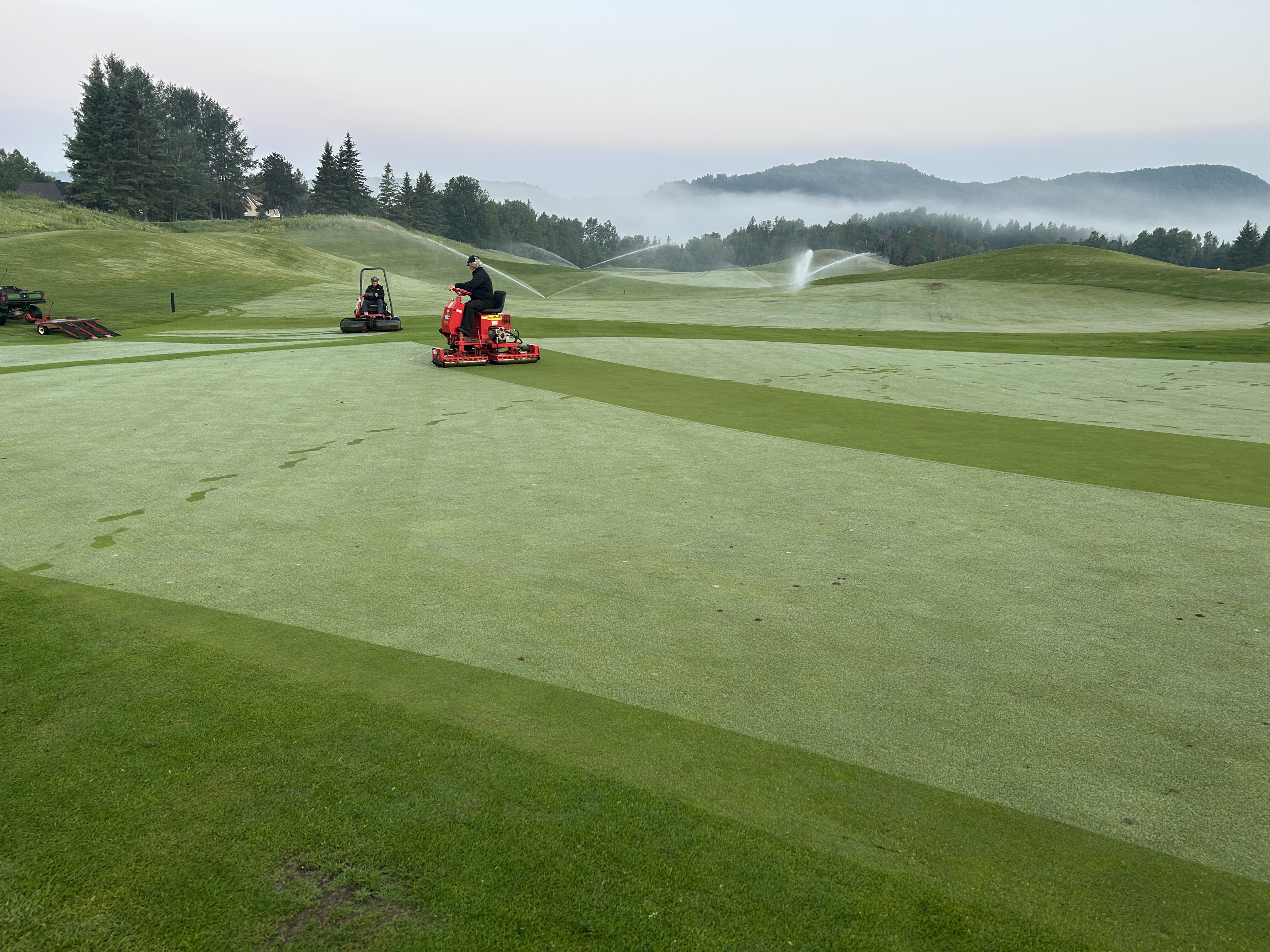
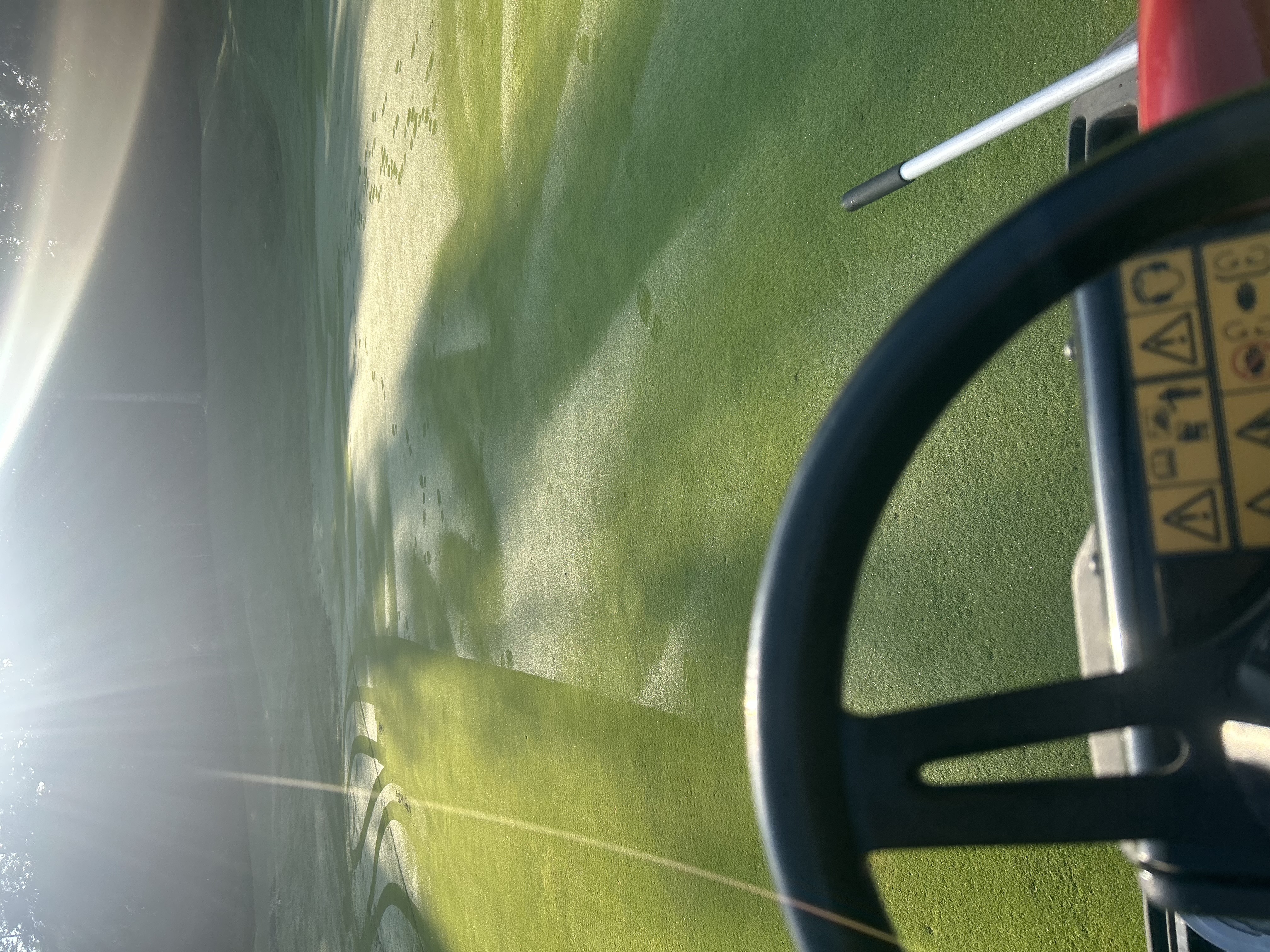
What is wild parsnip?
Wild parsnip is an invasive plant that generally grows in ditches, trailsides and sunny areas. It can be recognized by :
- A height of up to 1.5 meters
- Large, serrated leaves
- green stem with purple streaks
- Large umbels of pale yellow flowers (resembling ragweed or hogweed)
Warning: the sap of wild parsnip is photosensitizing. In contact with the skin and exposed to sunlight, it can cause burns, redness, blistering and s
How are we going to intervene?
The club's maintenance team has put in place a rigorous strategy:
- Identify and map affected areas on the grounds (borders, ditches, edges, low-mow areas).
- Safe manual weeding:
- Using gloves, goggles and long sleeves.
- Plants will be removed before full flowering, to avoid seed dispersal.
- Continuous monitoring:
- Weekly visits to problem areas.
- Rapid re-intervention in the event of regrowth.
What we ask of our members
- Do not touch suspect plants.
- Report any invaded areas to a member of our maintenance staff.
- If you suspect contact, wash immediately with soapy water and avoid exposure to sunlight for 48 hours.
Why is this important?
- To protect the safety of members, staff and visitors.
- Maintain the beauty and playability of our grounds.
- Prevent this species from becoming a permanent fixture in our ecosystem.
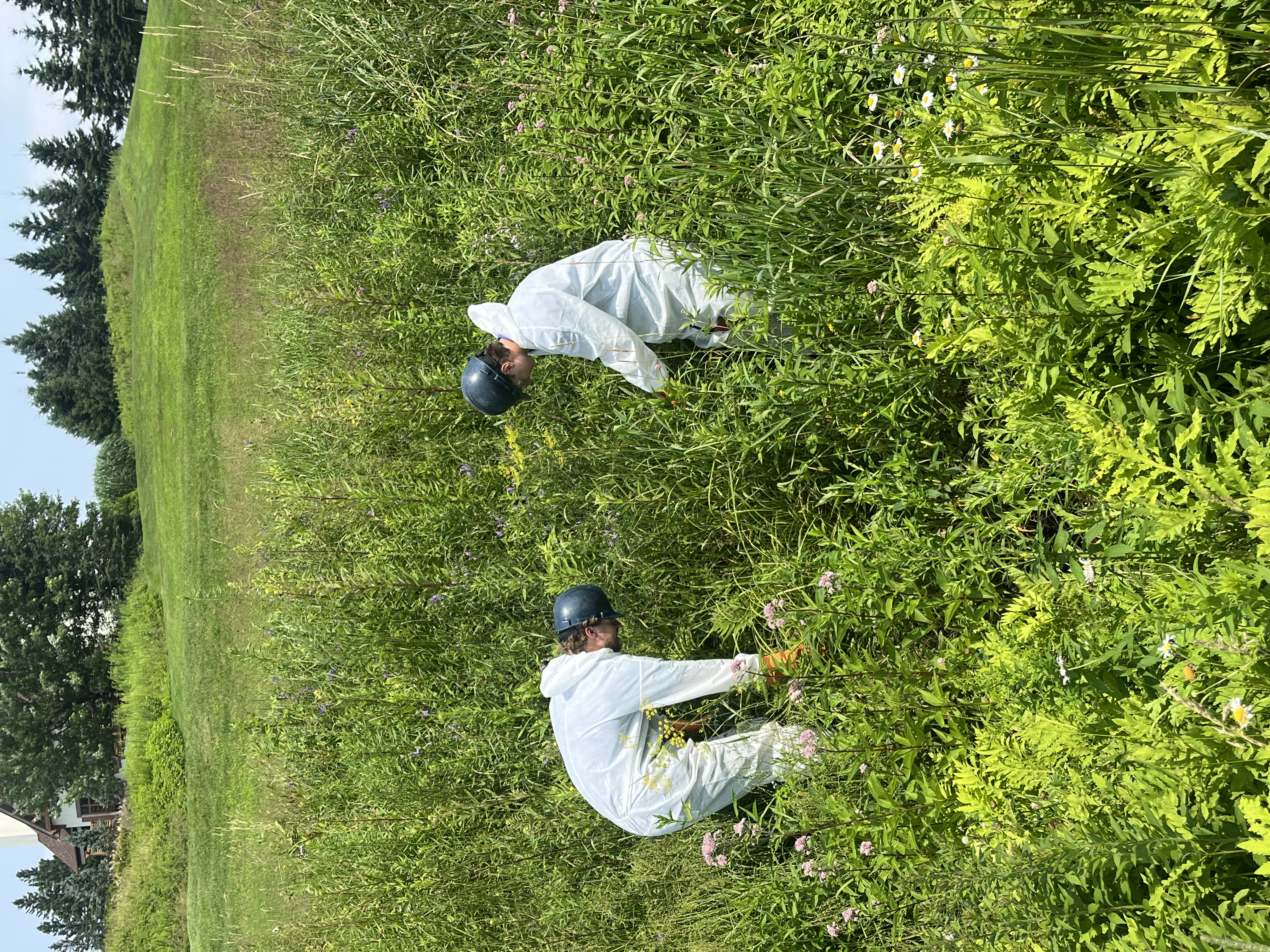
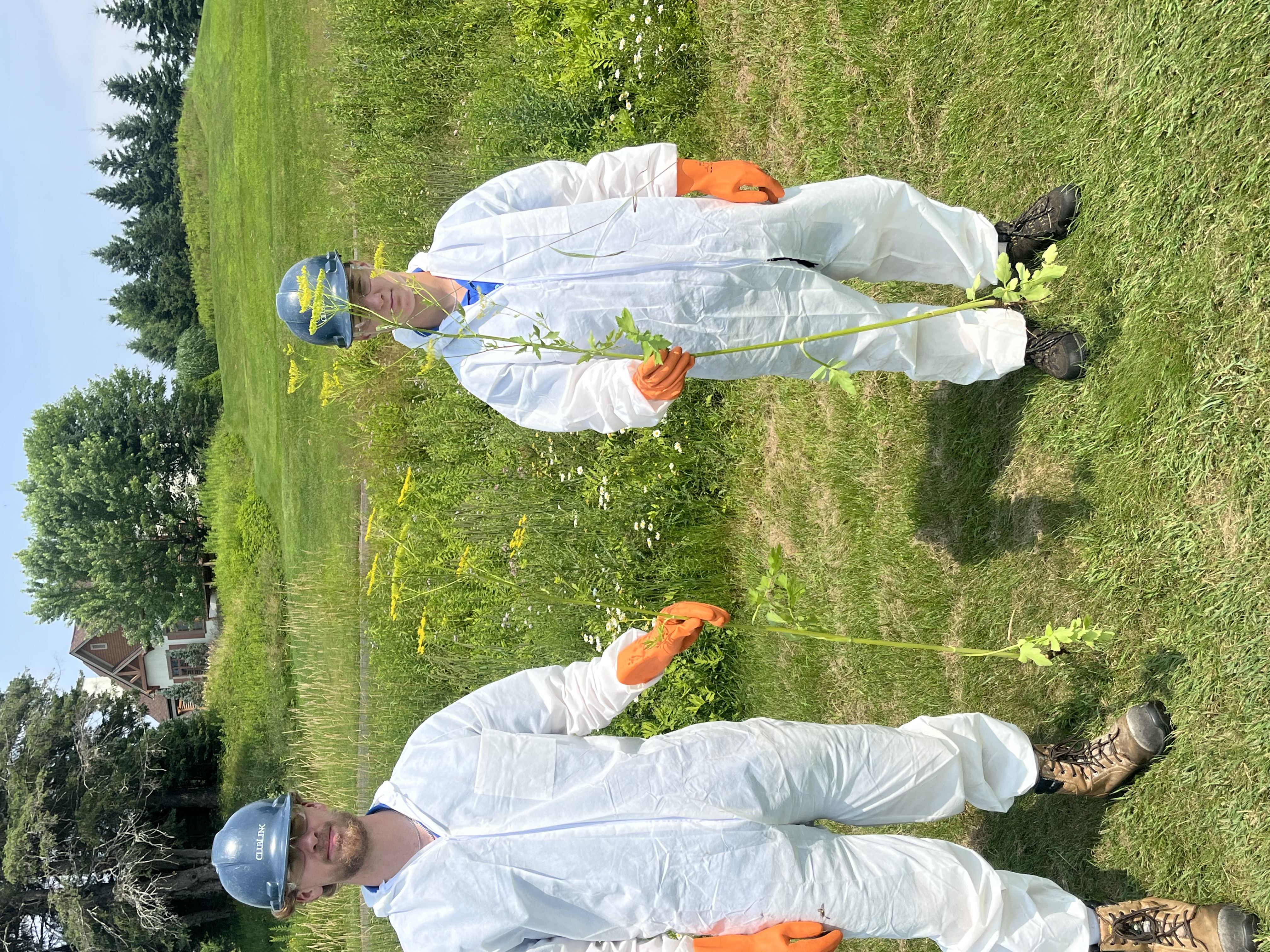
A courtesy reminder to all members
Help us preserve the quality of our course
- Repair your ball marks on the greens
After each approach shot, be sure to carefully repair any marks left by the ball on the green. Prompt repair prevents lasting damage and keeps surfaces smooth for everyone. Make it a habit to repair your ball mark plus one more while you’re at it!
- Replace your divot or add sand mix
On fairways or tees:
- Replace the divot where possible.
- Otherwise, fill the hole with the sand/seed mix supplied in the carts.
A small gesture that makes a big difference to turf regeneration.
- Respect the black posts
The black posts indicate a transition zone forbidden to golf carts.
Please exit the fairway at this point, and walk the rest of the way to your ball.
These areas are often close to the greens, which are more fragile and susceptible to wear.
We will give extra attention to these areas with an additional amendment of seed and fertilizer.
- 90-degree rule for golf carts
Consider this proper golf cart etiquette. Please make the most use of the cart paths on each hole and only turn off the path to take the shortest route to your ball on the grass. Most of your cart travel throughout the course will then be done on the designated cart paths and thus minimizing unneeded traffic wear.
How to apply it
- Roll along the path until you are level with your ball.
- Turn at a right angle (90°) and head straight for the ball.
- After playing, return in a straight line to the 90° path.
Why this rule?
- Less wear and tear on fairways.
- Less damage on wet ground.
- Less tire burn in hot weather.
Thanks to all our members for their commitment
Good habits means you’re doing your part to keep the golf courses you play on beautiful, safe and durable all season long.
Marc-André Doré
Course Superintendent